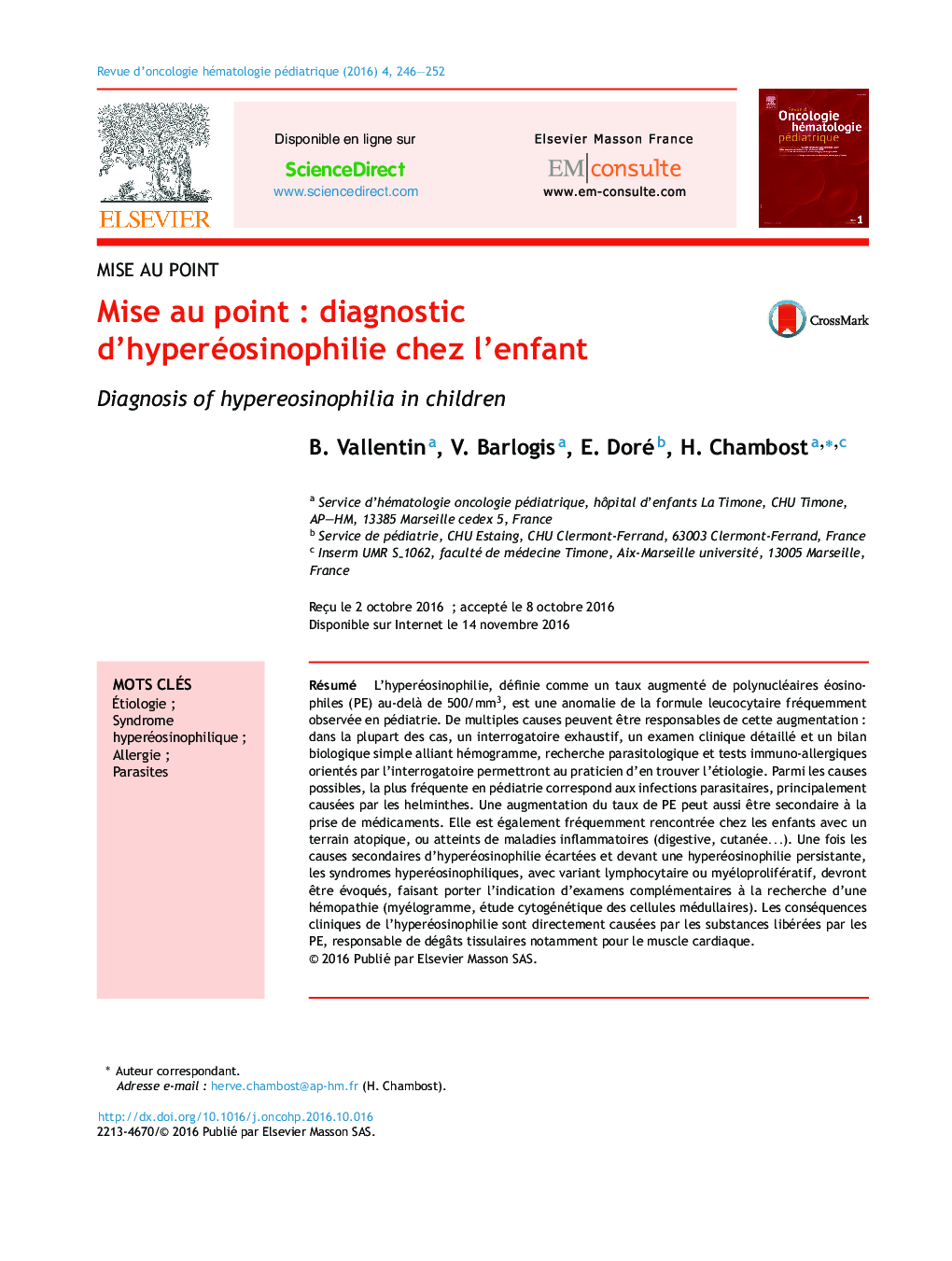| کد مقاله | کد نشریه | سال انتشار | مقاله انگلیسی | نسخه تمام متن |
|---|---|---|---|---|
| 8734763 | 1590992 | 2016 | 7 صفحه PDF | دانلود رایگان |
عنوان انگلیسی مقاله ISI
Mise au point : diagnostic d'hyperéosinophilie chez l'enfant
دانلود مقاله + سفارش ترجمه
دانلود مقاله ISI انگلیسی
رایگان برای ایرانیان
کلمات کلیدی
موضوعات مرتبط
علوم زیستی و بیوفناوری
ایمنی شناسی و میکروب شناسی
ایمونولوژی
پیش نمایش صفحه اول مقاله

چکیده انگلیسی
Hypereosinophilia defined as a range of eosinophils > 500/mm3 in the peripheral blood is a frequent situation in pediatric cases. Multiple causes may be responsible for this increase: in most cases, a careful medical history, a detailed clinical examination and a simple blood count with parasitology and immuno-allergic tests will enable the medical practitioner to find the etiology. Among secondary causes of eosinophilia, the most common pediatric cause is parasitic infections mainly caused by helminths. An increasing eosinophils ratio can also be secondary to drug ingestion, atopic disease or inflammatory diseases (digestive, skin, hypersensitibity reactionâ¦). If secondary causes of eosinophilia are excluded while persistent eosinophilia is assessed, hypereosinophilic syndromes (HES) should be raised with lymphocytic or myeloproliferative variant. For diagnosis, additional examinations as myelogram, cytogenetics or analysis of lymphocytic population by flow cytometry are required. Significant clinical consequences of eosinophilia are directly caused by substances released by eosinophil with threatening tissue damage particularly to endocardial tissue.
ناشر
Database: Elsevier - ScienceDirect (ساینس دایرکت)
Journal: Revue d'Oncologie Hématologie Pédiatrique - Volume 4, Issue 4, December 2016, Pages 246-252
Journal: Revue d'Oncologie Hématologie Pédiatrique - Volume 4, Issue 4, December 2016, Pages 246-252
نویسندگان
B. Vallentin, V. Barlogis, E. Doré, H. Chambost,